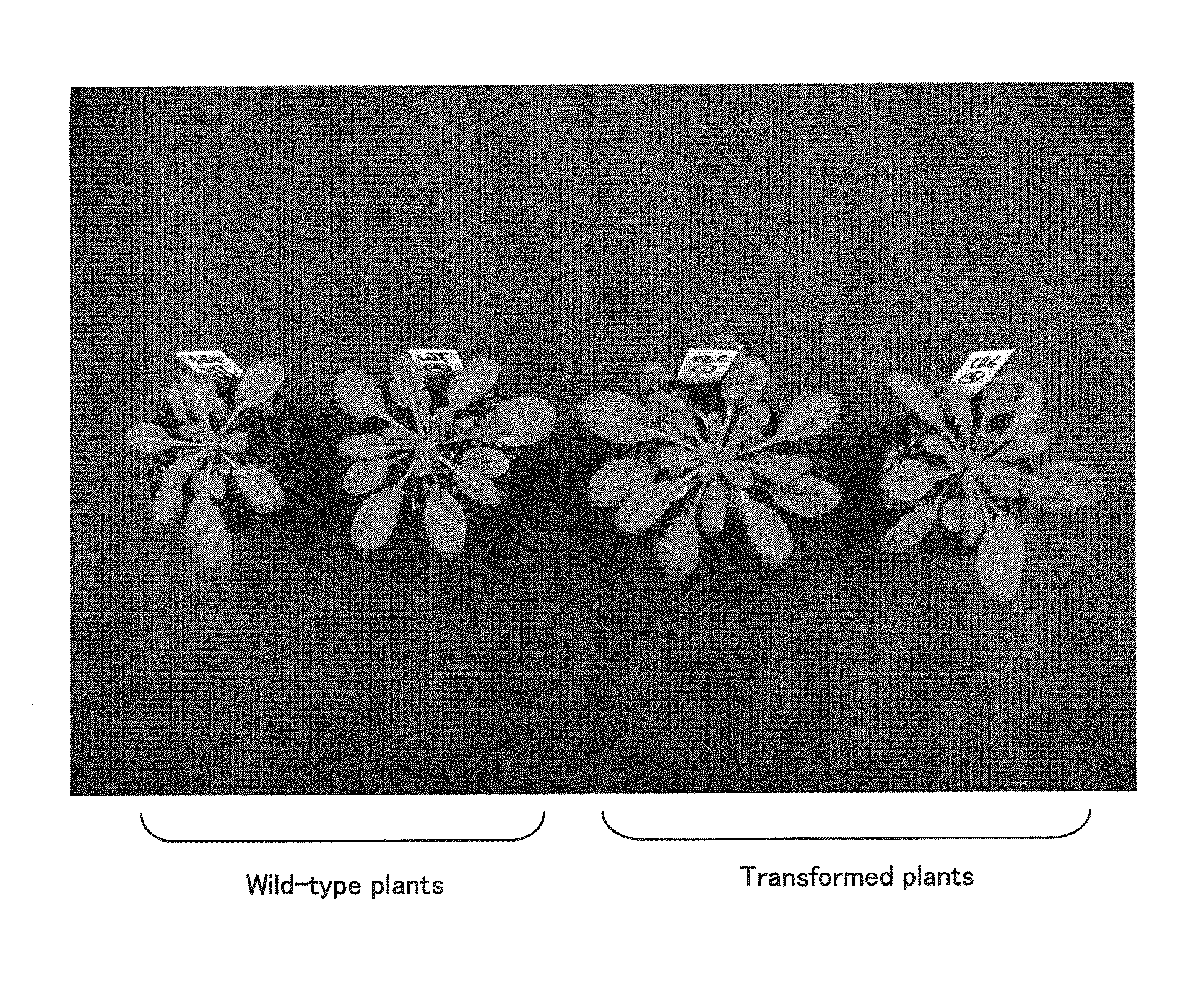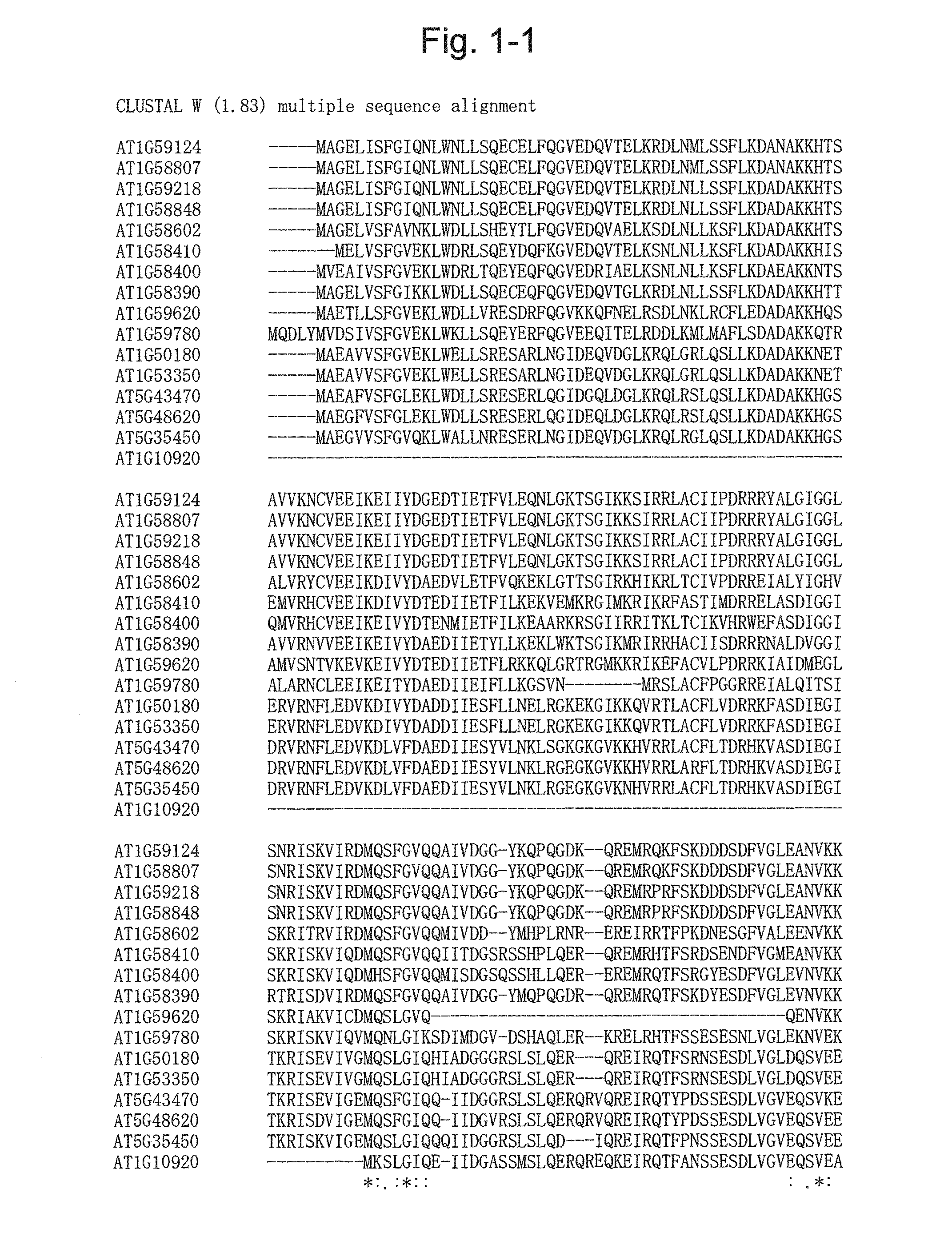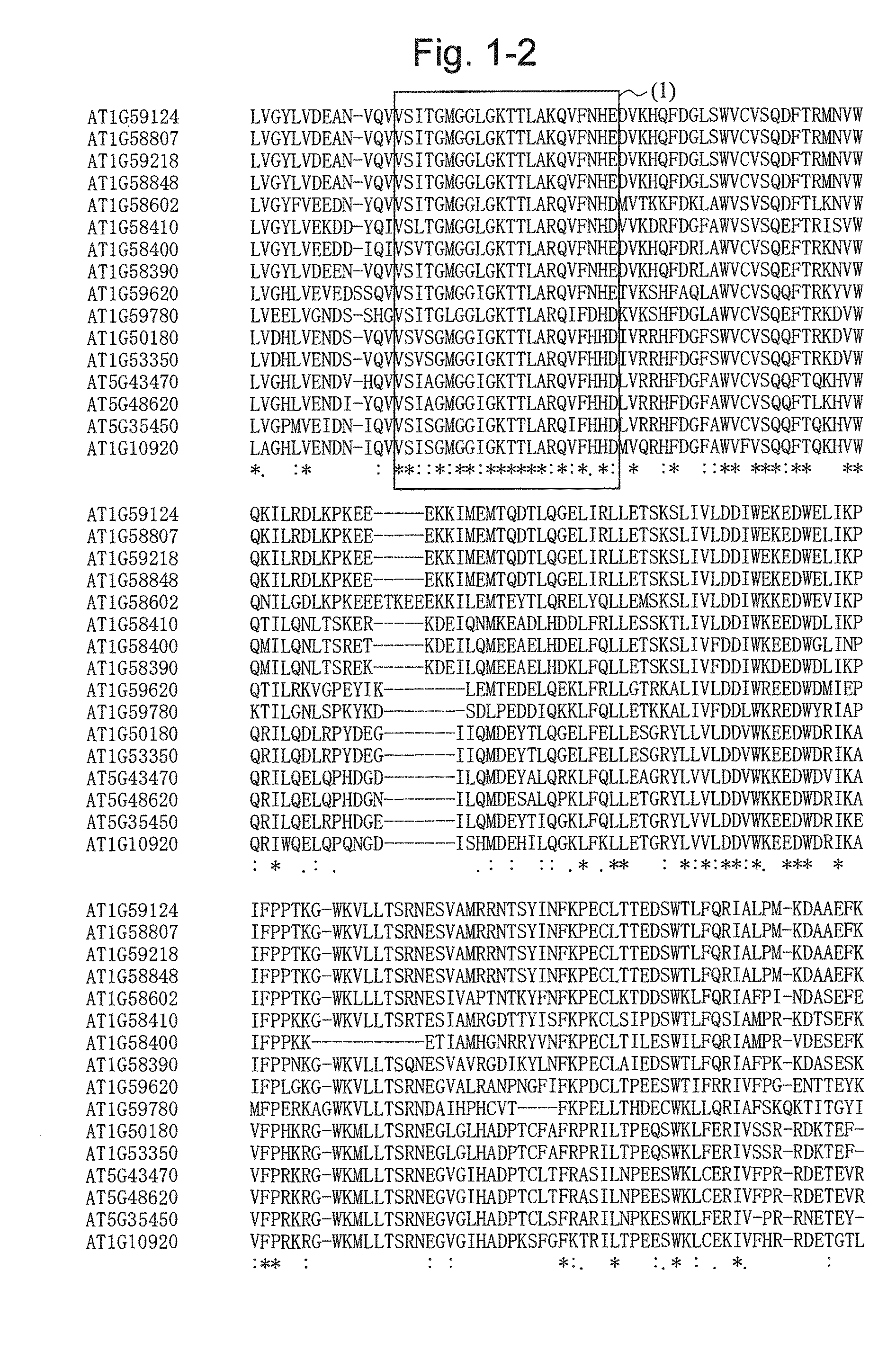Gene capable of increasing the production of plant biomass and method for using the same
- Summary
- Abstract
- Description
- Claims
- Application Information
AI Technical Summary
Benefits of technology
Problems solved by technology
Method used
Image
Examples
example 1
Materials and Methods
1-1. Experimental Materials
[0100]As experimental materials, seeds of Arabidopsis thaliana mutants (Activation-tag lines: Weigel T-DNA lines, Total of 20072 lines) were used. In addition, the seeds were purchased from the Nottingham Arabidopsis Stock Centre (NASC). Regarding the seeds used as experimental materials, experimental materials, Weigel, D., et al., Plant Physiol., 122, 1003-1013 (2000) can be referred to.
1-2. Methods
1-2-1. Selection of Salt-Resistant Mutants
[0101]Seeds of Weigel T-DNA lines were aseptically sowed on 125 mM or 150 mM NaCl-containing modified MS agar (1%) medium [vitamins in B5 medium, 10 g / l sucrose, and 8 g / L agar (for bacterial medium; Wako Pure Chemical Industries, Ltd.)] and then cultured at 22° C. under 30-100 μmol / m2 / sec illumination (a cycle of 16 hours in the light / 8 hours in the dark). Two to four weeks after sowing, salt-resistant mutant candidates were selected. In addition, regarding MS medium, see Murashige, T. et al. (1962...
PUM
| Property | Measurement | Unit |
|---|---|---|
| Temperature | aaaaa | aaaaa |
| Temperature | aaaaa | aaaaa |
| Temperature | aaaaa | aaaaa |
Abstract
Description
Claims
Application Information
 Login to View More
Login to View More - R&D
- Intellectual Property
- Life Sciences
- Materials
- Tech Scout
- Unparalleled Data Quality
- Higher Quality Content
- 60% Fewer Hallucinations
Browse by: Latest US Patents, China's latest patents, Technical Efficacy Thesaurus, Application Domain, Technology Topic, Popular Technical Reports.
© 2025 PatSnap. All rights reserved.Legal|Privacy policy|Modern Slavery Act Transparency Statement|Sitemap|About US| Contact US: help@patsnap.com



